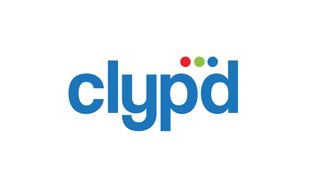TVision Attention Data Added to Clypd Ad Platform

Networks using the clypd audience-based sales platform can now use viewer attention data from TVision Insights to create more effective campaigns without increasing media budgets.
In one test conducted by the two companies, campaigns using the TVision date generated 40% more impressions.
“Television advertising still remains among the most effective marketing channels,” said Pete Doe, chief research officer at clypd. “What is critical is for the TV industry to demonstrate and improve advertising effectiveness. Optimizing campaigns for attention is an important element of that. By teaming up with TVision, we were able to create a case study that combines clypd’s optimization capability with TVision’s attention work.”
Advertisers are looking for metrics beyond traditional age and sex demographics to target campaigns and measure their effectiveness, TVision measures eye on screen attention on a second by second basis.
Related: FreeWheel Launches Tools for OTT, VOD Ad Inventory
“TVision has data on what viewers truly paid attention to on TV across every single ad airing in the past three years. This historical data enables us to track trends over time and identify areas that are likely to generate high attention, yielding value to advertisers and networks, ” said Dan Schiffman, chief revenue officer and co-founder of TVision Insights. “We know that high attention leads to business outcomes, whether that’s brand awareness, store visits, or sales. The next step is to make attention data transactional. By utilizing data showing what viewers pay attention to in clypd's platform, marketers can optimize plans for real eyeballs, increase campaign attention and drive results.”
The two companies also released a study titled “Beyond Impressions: Using Data to Improve Advertising Effectiveness,” to demonstrate how attention can be incorporated into TV campaigns.
Broadcasting & Cable Newsletter
The smarter way to stay on top of broadcasting and cable industry. Sign up below

To test the impact of attention on campaigns, clypd created two schedules with the same $560,000 budget and a $10.50 CPM (cost per thousand viewers) requirements. The first was a standard deal based on network, daypart and show, the estimated impressions and the price.
The second used the attention scores as an additional element, with the schedule optimized towards improving attention while maintaining acceptable reach delivering the required CPM.
The two campaigns had a different share of spending for the networks utilized and a different daypart mix.
The standard campaign generated slightly more impressions, but it delivered only 10.3 million impressions of attentive audience while the optimized proposal delivered 14.4 million, or 40% more for the same budget, the companies said.
Jon has been business editor of Broadcasting+Cable since 2010. He focuses on revenue-generating activities, including advertising and distribution, as well as executive intrigue and merger and acquisition activity. Just about any story is fair game, if a dollar sign can make its way into the article. Before B+C, Jon covered the industry for TVWeek, Cable World, Electronic Media, Advertising Age and The New York Post. A native New Yorker, Jon is hiding in plain sight in the suburbs of Chicago.

